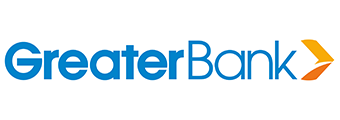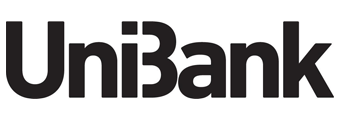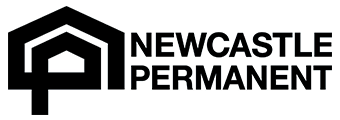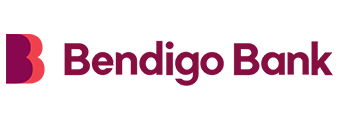Interest-only home loans have generally dwindled in popularity with owner occupiers though remain popular with investors for the benefits at tax time. The value of outstanding investor IO loans more than triples that of the owner occupiers' share. However IO loans make up a small portion of all outstanding residential property loans, at just over 10% of the market.
How do interest-only home loans work?
Unlike traditional principal & interest payments, ‘IO’ home loans only work to pay off the interest portion, and not the amount you borrowed for the home. Interest-only periods are typically up to five years, switching to a P&I loan after that amount for the remaining 25 or so years.
IO periods are typically offered on variable-rate home loans but they can be offered on fixed-rates too.
As you might have guessed this can significantly reduce your regular repayments within the IO period. However it comes at the cost of a more expensive home loan in the end.
If you borrowed $600,000 over 30 years with a 6.00% p.a. interest rate featuring a five year IO period, it would look a little something like this (assuming the interest rate stayed the same, which it likely won’t):
|
Monthly Repayment During IO Period |
Monthly Repayment For P&I Period |
Total Cost of Loan |
|
|---|---|---|---|
|
P&I Loan |
- |
$3,597 (30 years) |
$1,295,029 |
|
IO Loan |
$3,000 (5 years) |
$3,866 (25 years) |
$1,339,743 |
|
Cost Difference |
- |
+$269 |
+$44,714 |
How long do interest-only periods last?
Interest-only periods vary from lender to lender, and might depend on whether you’re an owner occupier or investor. Typically ‘IO’ periods are for between three and five years, however some lenders offer up to 10. You might also be able to apply for an extension past this limit.
What happens when my interest-only period expires?
You will typically roll-on to either the bank’s standard variable rate (SVR) or base interest rate, which is typically much higher than their discounted offerings. You may experience some repayment shock if you’re not careful, so to avoid a surprise, you could look to refinance or ask for a better deal from your bank or lender.
How is interest paid on interest-only home loans?
For investors, there are usually two options - in-advance or in-arrears. Advance interest payments allow you to pay next financial year’s interest on your loan in-full and upfront. This might allow you to make a tax deduction for the current financial year, and eliminates the need for regular repayments through the year.
Can I switch from a P&I loan to interest-only?
For investors this may be possible. Regulators generally don’t like banks switching owner occupiers from P&I payments to IO payments. If you’re facing financial difficulty, it’s important to contact your lender and work out some suitable options.
How is an interest-only home loan useful?
Reduces repayment size
An IO loan could reduce your repayment by hundreds of dollars a month. This can help with the budget as the start-up costs of a property are expensive. Stamp duty, conveyancing fees, applying for the loan itself, and other costs can all make the first few months or years of property ownership expensive. If you’re an investor, add on finding a tenant, property management and other costs.
Tax deductions for investors
Investors are able to claim back interest costs against their entire taxable income. They can also pay interest-only in-advance for the next financial year, which brings forward the deduction to the current financial year and negates the need to make regular mortgage repayments through the year. This can help from a cashflow perspective.
For investors this makes it entirely possible to reduce your costs significantly, pay interest-only for a period, then let the sale do the work. In that time hopefully you’ve netted yourself some capital gains too.
Works for bridging loans, construction finance, and other short term loans
Interest-only loans can make a lot of sense when it comes to shorter term, niche, financing needs. For example, bridging loans are for when you buy your new home before your old one sells and you need short-term finance. They are usually offered on terms of around six months.
Construction finance is also delivered interest-only in the construction stages as it is relatively short (hopefully), and there is no ‘principal’ dwelling to secure the loan against yet. After the construction finishes you’ll likely switch to the lender’s regular home loan offering.
What to consider with interest-only home loans
Higher interest rates
IO loans often feature higher interest rates, which can add significant cost to the overall mortgage picture. This is because of a few reasons, but mainly because the lender deems this period as a higher risk as you are not building your own equity during this period (more on that later).
Makes total loan more expensive
As demonstrated above, while the repayments are lower in the IO period, IO loans make the overall loan more expensive. That’s because it effectively ‘kicks the can down the road’, adding thousands in interest costs to the mortgage.
In some cases it can add many tens of thousands of dollars. If you’re an investor relying on selling the home to pay back the loan, you will have to factor this in to the overall equation as it can eat away at your equity.
Higher repayments after IO period ends
After the interest-only period ends, usually after three to five years, you will face a much higher principal & interest payment than you otherwise would have if you opted for P&I from the start. This is because the principal payments are now being condensed into a shorter timeframe.
Less equity built
During an IO period, you are not contributing to the principal of the home loan and not building your own equity. This can present a couple of problems, especially if property prices head south and you elect to sell. This could mean you owe more on the home loan than the home is worth.


















